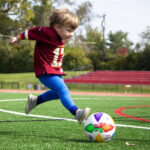December 15, 2025
Maintaining Skills For Children with Autism During COVID-19

FEATURED POSTS
December 11, 2025
December 4, 2025
By Ronit Molko, PhD, BCBA-D
The Covid-19 response requiring nationwide social distancing and sheltering in place has curtailed or eliminated opportunities for one-on-one or group ABA activities in centers and schools. That has left many parents of children on the autism spectrum wondering how to maintain the gains their children have made in ABA therapy. Because the current conditions will almost certainly persist into late Spring and possibly beyond, we want to help parents adapt to these new conditions as soon as possible.
Maintain Structure
The current situation is obviously sub-optimal, but there are strategies parents can employ to sustain their children’s forward momentum. The first is to recognize that the current measures represent a drastic disruption in the child’s routine and that establishing a new routine as soon as possible is important. This routine should adhere as closely as possible to the existing home-school routine with which the child has become comfortable. We all need some level of structure to function well- structure provides emotional safety as well as freedom.
Utilize Telehealth
Although the effort to minimize human-to-human contact has taken in-person ABA services off the table in many communities, many behavioral health providers are moving to telemedicine and online services using video conferencing and video calling apps. The number of these is expected to grow in the first few weeks of sheltering at home, so parents should access their providers for remote support and guidance.
Opportunities to Use ABA
ABA therapy is a repetitive command-response-reward learning system that develops a variety of skills, including communication, hygiene, play, sharing and other activities of daily living. They can be reinforced with everyday activities within the the new home-life routine.
Morning Routine
The morning routine might not have to vary at all, even without school. The child still must wake, wash, dress, brush teeth and eat breakfast, in the same order and at the same time as before. Parents should emphasize to their children the importance of personal hygiene and this is an excellent opportunity to teach the hand-washing and tooth brushing phases of this routine.
If the child normally has the option to choose what they want for breakfast, parents should maintain that choice and require the child to communicate it as before, and be rewarded with the option they choose. Veering off these routines can cause distress for children with autism.
Learning While Having Fun
It’s important to remember that many skills can be taught during typical daily activities and routines at home, as well as during times of play and fun. For example, baking together with your child provides the opportunity to teach and practice math, follow directions (a recipe) and the daily living skills of cleaning up.
Communication
Communication, playing and sharing skills can all be reinforced through play, for which there are myriad options even from home. Scholastic magazine offers free online lessons “built around a thrilling, meaningful story or video,” according to its website. These lessons can be adapted for children with autism and completed at the child’s pace. Scholastic will release 20 weeks of lessons designed to take three hours apiece.
Virtual Excursions
Various zoos now offer live video online of animals in their habitats. Discussion and play can be developed around the identities of the animals, the sounds they make and what the child can see them doing. Among the zoos with webcams are the Smithsonian in Washington, D.C., Seattle, Houston, San Diego, Maryland and Memphis. The penguin exhibit at the Kansas City Zoo is particularly fun and active.
Creativity Time
Art activities help children express their creativity while exercising some of their learned skills. Collaborative projects among children can be used as a springboard to practice sharing and communicating. Parents can focus on tactile art projects that fit the needs of their child, using household items like food dye, macaroni, sponges, shaving cream, toilet paper rolls and much more.
Make Time for Play
There are many other play activities that parents can employ to engage children with autism (and neurotypical children!) and reinforce the skills they have learned in therapy. These might include board games, exercise and sports, and computer games. Whatever the activity, communication with the autistic child should make clear what is expected and reward constructive responses.
Lunch and Dinner
Lunch and dinner times and routines should be maintained while the child is home. Involving an older autistic child in food preparation is a way to develop life skills while practicing sharing, communication, etc. Bedtime routines should be strictly maintained for the emotional comfort of the child.
Parents are their children’s first teachers and continue in that role for their entire childhoods. With a little creativity, parents of children with autism can find enjoyable, everyday moments to reinforce their children’s lessons from therapy.





